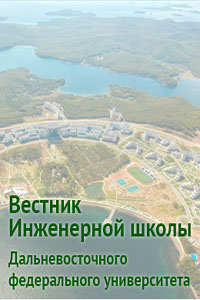Analysis of the impact of turbulence models, grid topology, and flow characteristics on the precision of propeller's hydrodynamic performances predictions in open water tests
DOI:
https://doi.org/10.24866/2227-6858/2025-2/15-25Keywords:
marine propeller, INSEAN E779A, CFD, RANS, Ansys Fluent, turbulence models, open water testsAbstract
The effects of the turbulence model, grid topology, and flow characteristics on the accuracy of numerical prediction of propeller hydrodynamic performance were studied over a wide range of advance ratios. RANS equations were solved with Ansys Fluent to evaluate the hydrodynamic coefficients of the E779A propeller model in the open water tests. The validity of the numerical results was examined by a published experimental benchmark; the numerical-experimental comparison revealed a good agreement. Thrust coefficient, torque, and efficiency were presented and analysed for different turbulence models and grid topologies in both steady and unsteady flow. It is found that using the transition turbulence model in conjunction with the hexahedral grid guarantees a high level of accuracy of the propeller hydrodynamic performance in the open water tests.
References
1. Sikirica A., Čarija Z., Kranjčević L., Lučin I. Grid type and turbulence model influence on propeller characteristics prediction // Journal of Marine Science and Engineering. 2019. Vol. 7. № 10. Art. 374. DOI: https://doi.org/10.3390/jmse7100374.
2. Morgut M., Nobile E. Influence of grid type and turbulence model on the numerical prediction of the flow around marine propellers working in uniform inflow // Ocean Engineering. 2012. Vol. 42.
P. 26–34. DOI: https://doi.org/10.1016/j.oceaneng.2012.01.012
3. Tu T.N. Numerical simulation of propeller open water characteristics using RANSE method // Alexandria Engineering Journal. 2019. Vol. 58. № 2. P. 531–537. DOI: https://doi.org/10.1016/j.aej.2019.05.005
4. Wang X., Walters K. Computational analysis of marine-propeller performance using transition-sensitive turbulence modeling // Journal of Fluids Engineering. 2012. Vol. 134. № 7. Art. 071107. DOI: https://doi.org/10.1115/1.4005729.
5. Nakisa M. and A.M.J. and A.A.M. Assessment of marine propeller hydrodnamic performance in open water via CFD: Proceedings of The 7th International Conference on Marine Technology (MARTEC 2010). 2010. Р. 35–44.
6. Helal M.M., Ahmed T.M., Banawan A.A., Kotb M.A. Numerical prediction of sheet cavitation on marine propellers using CFD simulation with transition-sensitive turbulence model // Alexandria Engineering Journal. 2018. Vol. 57. № 4. P. 3805–3815. DOI: https://doi.org/10.1016/j.aej.2018.03.008
7. Корнелюк О. Способы задания граничных условий и геометрии гребного винта в Flow Visi-on // Наука и прогресс транспорта. Вестник Днепропетровского национального университета железнодорожного транспорта. 2018. № 5(77). С. 74–81.
8. Месропян А.В., Шабельник Ю.А. О влиянии параметров сеточной модели при формировании расчётной области на примере гребного винта // Вестник Уфимского государственного авиационного технического университета. 2021. № 2(92). С. 41–47.
9. Белая А.Б., Яковлев А.Ю. Forecasting of modern propeller characteristics by OpenFoam // Marine Intellectual Technologies, 2020. № 3(49). P. 40–47.
10. Belhenniche S.E. et al. Effect of pressure pores size on hydrodynamic and hydroacoustic marine propeller performances under cavitating case // Ocean Engineering. 2024. Vol. 307. Art. 118164.
11. Rizk M.A. et al. Cavitation Predictions of E779A Propeller by a RANSE-based CFD and Its Performance Behind a Generic Hull // Journal of Marine Science and Application. 2023. Vol. 22. № 2. P. 273–283.
12. Alves Pereira F.J. et al. Description of the INSEAN E779A Propeller Experimental Dataset. 2006.
13. Ali R., Tryaskin N.V. Numerical study on effect of the turbulence initial conditions on transition flow over 2D airfoil // Proceedings of the Institute for System Programming of the RAS. 2019. Vol. 31. № 6. P. 203–214.
Downloads
Published
Issue
Section
License
Copyright (c) 2025 Far Eastern Federal University: School of Engineering Bulletin

This work is licensed under a Creative Commons Attribution 4.0 International License.

